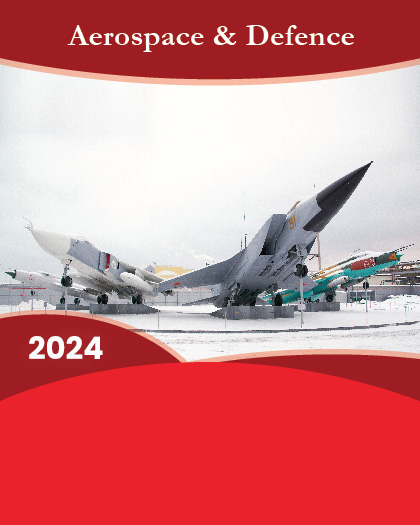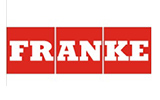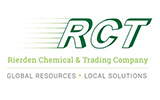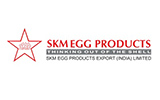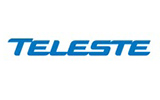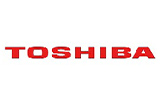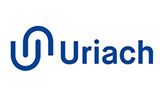Table of Contents:
1 Executive Summary
2 Market Introduction
2.1 Definition
2.2 Scope of the Study
2.3 List of Assumptions
2.4 Market Structure
3 Research Methodology
3.1 Research Process
3.2 Primary Research
3.3 Secondary Research
3.4 Market Size Estimation
3.5 Forecast Model
4 Market Dynamics
4.1 Introduction
4.2 Drivers
4.2.1 Emergence of Wireless Air-Ground Communication
4.2.2 Technological Advancements in Aircraft Communications
4.2.3 Increase in Aircraft Deliveries
4.3 Restraints
4.3.1 Issues Associated with the Availability of Radio Spectrum
4.3.2 High Capital Requirement
4.4 Opportunities
4.4.1 Increase in Demand for Next-Generation Air-Ground Communications
4.4.2 Commercialization of UAV
5 Market Factor Analysis
5.1 Porter's Five Forces Model
5.1.1 Threat of New Entrants
5.1.2 Bargaining Power of Suppliers
5.1.3 Bargaining Power of Buyers
5.1.4 Threat of Substitutes
5.1.5 Rivalry
5.2 Supply Chain Analysis
5.2.1 Raw Material Supply
5.2.2 Component Manufacturing
5.2.3 Component Procurement and Installation
5.2.4 End-Use
6 Global VHF Air-Ground Communication Stations Market, By Type
6.1 Overview
6.1.1 Desktop Air-Ground Communication Stations
6.1.2 Portable Air-Ground Communication Station
7 Global VHF Air-Ground Communication Stations Market, By Application
7.1 Overview
7.1.1 Air Traffic Control System
7.1.2 Civil Aviation Air-Ground Communication
7.1.3 Military Aviation Communication
7.1.4 Others
8 Global VHF Air-Ground Communication Stations Market, By Region
8.1 Overview
8.2 North America
8.2.1 US
8.2.2 Canada
8.2.3 Mexico
8.3 Europe
8.3.1 France
8.3.2 UK
8.3.3 Germany
8.3.4 Russia
8.3.5 Italy
8.4 Asia-Pacific
8.4.1 China
8.4.2 Southeast Asia
8.4.3 India
8.4.4 Japan
8.4.5 South Korea
8.5 South America
8.5.1 Brazil
8.5.2 Argentina
8.5.3 Columbia
8.6 Middle East & Africa
8.6.1 Saudi Arabia
8.6.2 UAE
8.6.3 South Africa
8.6.4 Egypt
8.6.5 Nigeria
9 Competitive Landscape
9.1 Competitive Scenario
9.2 Market Share Analysis
10 Company Profiles
10.1 Rohde & Schwarz
10.1.1 Company Overview
10.1.2 Financial Overview
10.1.3 Product Offerings
10.1.4 Key Developments
10.1.5 SWOT Analysis
10.1.6 Key Strategy
10.2 Northrop Grumman Corporation
10.2.1 Company Overview
10.2.2 Financial Overview
10.2.3 Products Offerings
10.2.4 Key Developments
10.2.5 SWOT Analysis
10.2.6 Key Strategy
10.3 Selex ES (Leonardo)
10.3.1 Company Overview
10.3.2 Financial Overview
10.3.3 Product Offerings
10.3.4 Key Developments
10.3.5 SWOT Analysis
10.3.6 Key Strategy
10.4 Becker Avionics
10.4.1 Company Overview
10.4.2 Financial Overview
10.4.3 Product Offerings
10.4.4 Key Developments
10.4.5 SWOT Analysis
10.4.6 Key Strategy
10.5 Viasat Inc.
10.5.1 Company Overview
10.5.2 Financial Overview
10.5.3 Product Offerings
10.5.4 Key Developments
10.5.5 SWOT Analysis
10.5.6 Key Strategy
10.6 Spaceon
10.6.1 Company Overview
10.6.2 Financial Overview
10.6.3 Product Offerings
10.6.4 Key Developments
10.6.5 SWOT Analysis
10.6.6 Key Strategy
10.7 Rockwell Collins
10.7.1 Company Overview
10.7.2 Financial Overview
10.7.3 Product Offerings
10.7.4 Key Developments
10.7.5 SWOT Analysis
10.7.6 Key Strategy
10.8 Honeywell International Inc.
10.8.1 Company Overview
10.8.2 Financial Overview
10.8.3 Product Offerings
10.8.4 Key Developments
10.8.5 SWOT Analysis
10.8.6 Key Strategy
10.9 Raytheon Company
10.9.1 Company Overview
10.9.2 Financial Overview
10.9.3 Product Offerings
10.9.4 Key Developments
10.9.5 SWOT Analysis
10.9.6 Key Strategy
10.1 Thales Group
10.10.1 Company Overview
10.10.2 Financial Overview
10.10.3 Product Offerings
10.10.4 Key Developments
10.10.5 SWOT Analysis
10.10.6 Key Strategy
11 Appendix
11.1 List of References

